Powet Alphabet: K is for The King of Fighters
by William Talley, filed in Powet Alphabet on Sep.12, 2010
Since the alphabet is the building block of our language, the Powet Alphabet is the building block of what makes us geeks.
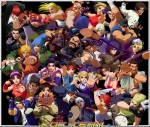 The early 90s bought gamers a new genre of video games: the one-on-one fighter. This new genre of games was the offspring of sports games and beat-em-ups. You took one fighter against another, and it was up to you to take him down. These games weren’t controlled by the simple joystick plus 1 or 2 button setups. No, there were anywhere from 3 6 buttons, and you performed special moves by pulling off combinations of the joystick and these buttons to pull off special attacks. The key to winning these games was mastering and utilizing these special attacks, stringing them together in combos. To the best fighting game players, this became both art and science. It wasn’t uncommon to see crowds of players standing around a heated fighting game contest that was going on at the local arcade, weather it was Street Fighter, Mortal Kombat, Power Instinct, or X-men. Capcom was the undisputed leader of the genre, although beside Midway’s Mortal Kombat, there was another competitor, SNK. Of all the game developers who made fighting games, SNK had the most acclaim after Capcom. The developer had released a collection of fighting games for its Neo Geo arcade system/home console, among them were Fatal Fury and Art of Fighting. These two games enjoyed a deep storyline and an interesting cast of characters who were every bit as memorable as Capcom’s fighters. In 1994 however, they would release something that had never before been seen in gaming, the King Of Fighters.
The early 90s bought gamers a new genre of video games: the one-on-one fighter. This new genre of games was the offspring of sports games and beat-em-ups. You took one fighter against another, and it was up to you to take him down. These games weren’t controlled by the simple joystick plus 1 or 2 button setups. No, there were anywhere from 3 6 buttons, and you performed special moves by pulling off combinations of the joystick and these buttons to pull off special attacks. The key to winning these games was mastering and utilizing these special attacks, stringing them together in combos. To the best fighting game players, this became both art and science. It wasn’t uncommon to see crowds of players standing around a heated fighting game contest that was going on at the local arcade, weather it was Street Fighter, Mortal Kombat, Power Instinct, or X-men. Capcom was the undisputed leader of the genre, although beside Midway’s Mortal Kombat, there was another competitor, SNK. Of all the game developers who made fighting games, SNK had the most acclaim after Capcom. The developer had released a collection of fighting games for its Neo Geo arcade system/home console, among them were Fatal Fury and Art of Fighting. These two games enjoyed a deep storyline and an interesting cast of characters who were every bit as memorable as Capcom’s fighters. In 1994 however, they would release something that had never before been seen in gaming, the King Of Fighters.
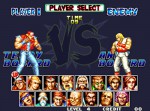 KOF has its origins in the Fatal Fury series. Taking place in a fictional town known as South Town, crime boss Geese Howard holds an annual tournament known as the King Of Fighters. After he is defeated by hero Terry Bogard, he is replaced by Wolfgang Krauser who takes the tournament international, allowing characters such as Mai Shiranui to join. Fatal Fury was preceded by Art of Fighting, a series which takes place at least a decade before this. There had already been a crossover of sorts between the two, as Art of Fighting protagonist Ryo Sakazaki appeared in Fatal Fury Special as a secret final boss in a ‘Dream Match’, and a young, long haired Geese Howard appeared as the final boss of Art of Fighting 2. It was these crossover appearances that inspired SNK to create a true crossover. They has initially set out on a beat-em-up, but instead settled on a fighting game.
KOF has its origins in the Fatal Fury series. Taking place in a fictional town known as South Town, crime boss Geese Howard holds an annual tournament known as the King Of Fighters. After he is defeated by hero Terry Bogard, he is replaced by Wolfgang Krauser who takes the tournament international, allowing characters such as Mai Shiranui to join. Fatal Fury was preceded by Art of Fighting, a series which takes place at least a decade before this. There had already been a crossover of sorts between the two, as Art of Fighting protagonist Ryo Sakazaki appeared in Fatal Fury Special as a secret final boss in a ‘Dream Match’, and a young, long haired Geese Howard appeared as the final boss of Art of Fighting 2. It was these crossover appearances that inspired SNK to create a true crossover. They has initially set out on a beat-em-up, but instead settled on a fighting game.
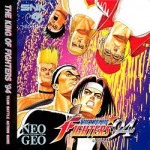 King Of Fighters bought together characters from Art of Fighting and Fatal Fury and put them in 3-man teams who were each assigned a country. The Bogards, Terry and Andy were teamed up with their longtime friend Joe Higashi formed team Italy to represent Fatal Fury, while the father-son duo of Ryo and Takuma Sakazaki were teamed with Ryo’s friend Robert Gracia to form team Mexico, while the ladies Mai, Yuri, and King formed the all-lady England team (by the way, in case you were wondering how Art of Fighting and Fatal Fury characters are able to interact with each other without the AOF crew looking older than they should, it’s because KOF takes place in a separate continuity from the Fatal Fury/Art of Fighting storyline). Fatal Fury’s Kim Kaphwan was joined by two new characters, the huge Chang and the diminutive Choi to form Team Korea. It wasn’t just Fatal Fury and Art of Fighting characters who were invited to the party either. Characters from Ikari Warriors and Psycho Soldier also joined the game’s cast. Team Brazil consisted of the Ikari Warriors Ralf and Clark along with the new character Heirden, while Psycho Soldier’s Athena and Sie Kensou were a part of China’s team. The U.S.A was represented by a humorous, even if somewhat stereotypical trio of ex-spots stars. The most significant of all the new arrivals was the Japan team. Comprised of new charactes Kyo Kusanagi, Benimaru Nikkado, and Goro Daimon, team Japan became the heroes of King of Fighters. The final boss was a badass named Rugal Bernstein. Rugal hosts the KOF tournament in order to turn the defeated fighters into stone statues. Although he only has 2 chronological appearances in the series (the rest have been in out of continuity ‘dream matches’ or crossovers), Rugal is one of SNK’s most prolific boss characters.
King Of Fighters bought together characters from Art of Fighting and Fatal Fury and put them in 3-man teams who were each assigned a country. The Bogards, Terry and Andy were teamed up with their longtime friend Joe Higashi formed team Italy to represent Fatal Fury, while the father-son duo of Ryo and Takuma Sakazaki were teamed with Ryo’s friend Robert Gracia to form team Mexico, while the ladies Mai, Yuri, and King formed the all-lady England team (by the way, in case you were wondering how Art of Fighting and Fatal Fury characters are able to interact with each other without the AOF crew looking older than they should, it’s because KOF takes place in a separate continuity from the Fatal Fury/Art of Fighting storyline). Fatal Fury’s Kim Kaphwan was joined by two new characters, the huge Chang and the diminutive Choi to form Team Korea. It wasn’t just Fatal Fury and Art of Fighting characters who were invited to the party either. Characters from Ikari Warriors and Psycho Soldier also joined the game’s cast. Team Brazil consisted of the Ikari Warriors Ralf and Clark along with the new character Heirden, while Psycho Soldier’s Athena and Sie Kensou were a part of China’s team. The U.S.A was represented by a humorous, even if somewhat stereotypical trio of ex-spots stars. The most significant of all the new arrivals was the Japan team. Comprised of new charactes Kyo Kusanagi, Benimaru Nikkado, and Goro Daimon, team Japan became the heroes of King of Fighters. The final boss was a badass named Rugal Bernstein. Rugal hosts the KOF tournament in order to turn the defeated fighters into stone statues. Although he only has 2 chronological appearances in the series (the rest have been in out of continuity ‘dream matches’ or crossovers), Rugal is one of SNK’s most prolific boss characters.
The Orochi Saga (95 97)
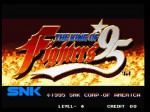 Spurred on by the success of KOF 94, SNK set out to create a sequel. KOF 95 was the beginning of what was known as the Orochi saga, which centered around an ancient demon. It introduced Iori Yagami, Kyo’s rival who headed a team which included Art of Fighting villain Eji Kisragi and Fatal Fury enemy Billy Kane. Rugal was back as well, in a new Omega Rugal form. Even though he was killed off in this title, the Omega Rugal form is the one that shows up in the dream matches. KOF 95 also introduced the ability to edit your team rather than simply being confined to a predetermined lineup. Wanted to make an all star team of Kyo, Terry, and Ryo? Replace King with Athena or Heidern in the girl’s team? Put Billy Kane on the Ikari team? Iori on the Fatal Fury team? It can happen here. 95 was also the first KOF game that was released on a U.S. Home system other than Neo Geo. A quick note about the home console versions of KOF: as you know, the Neo Geo home console was priced at $600 while games were around $200 a pop (seeing as how they were made out of the actual arcade boards), so obviously buying the original Neo Geo versions of the KOF games were out the question for most gamers. Thankfully, KOF debuted at a time where console technology was beginning to match and even surpass the arcade originals. So unlike the 16 bit years, where Neo Geo ports had features cut and graphics and sound scaled back, ports for the newer systems had their graphics improved and features added in order to take advantage of the system’s hardware. For instance, the Playstation version of KOF 95 featured a CD quality soundtrack (which you could even pop in your cd player to listen to) and a memory card save feature, while the Playstation 2 port of KOF 2000, 2001 (which were released on a double pack), 2002, and 2003 (which were also released in a double pack) featured an option for an enhanced graphics mode and a remixed soundtrack. The Xbox port of 2002/2003 featured the above mentioned enhancements along with online play. 96 continued the Orochi storyline, and featured all new sprites while 97 represented the conclusion of the Orochi story-arc conclusion, centering around the ‘new faces’ team, a team of new characters connected to the demon Orochi.
Spurred on by the success of KOF 94, SNK set out to create a sequel. KOF 95 was the beginning of what was known as the Orochi saga, which centered around an ancient demon. It introduced Iori Yagami, Kyo’s rival who headed a team which included Art of Fighting villain Eji Kisragi and Fatal Fury enemy Billy Kane. Rugal was back as well, in a new Omega Rugal form. Even though he was killed off in this title, the Omega Rugal form is the one that shows up in the dream matches. KOF 95 also introduced the ability to edit your team rather than simply being confined to a predetermined lineup. Wanted to make an all star team of Kyo, Terry, and Ryo? Replace King with Athena or Heidern in the girl’s team? Put Billy Kane on the Ikari team? Iori on the Fatal Fury team? It can happen here. 95 was also the first KOF game that was released on a U.S. Home system other than Neo Geo. A quick note about the home console versions of KOF: as you know, the Neo Geo home console was priced at $600 while games were around $200 a pop (seeing as how they were made out of the actual arcade boards), so obviously buying the original Neo Geo versions of the KOF games were out the question for most gamers. Thankfully, KOF debuted at a time where console technology was beginning to match and even surpass the arcade originals. So unlike the 16 bit years, where Neo Geo ports had features cut and graphics and sound scaled back, ports for the newer systems had their graphics improved and features added in order to take advantage of the system’s hardware. For instance, the Playstation version of KOF 95 featured a CD quality soundtrack (which you could even pop in your cd player to listen to) and a memory card save feature, while the Playstation 2 port of KOF 2000, 2001 (which were released on a double pack), 2002, and 2003 (which were also released in a double pack) featured an option for an enhanced graphics mode and a remixed soundtrack. The Xbox port of 2002/2003 featured the above mentioned enhancements along with online play. 96 continued the Orochi storyline, and featured all new sprites while 97 represented the conclusion of the Orochi story-arc conclusion, centering around the ‘new faces’ team, a team of new characters connected to the demon Orochi.
Dream Match 98
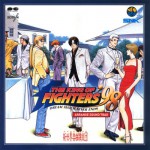 KOF 98 was billed as a ‘dream match’. As such, it featured no storyline or endings, and it bought back characters who were either killed off or MIA from previous games, with Omega Rugal being the final boss. It was a fun way to catch one’s breath after the previous arc, and form matches featuring characters who were missing from other installments. Wanted to pit Vice and Mature against the U.S.A. Sports team (who had returned in this entry)? It was possible here. 98 was released on Sega Dreamcast as KOF Dream Match 1999, given enhanced graphics, a remixed soundtrack, and an animated intro cinema. KOF 98 received a remake in the form of KOF 98 Ultimate Match which featured 3D graphics, a remade soundtrack, the boss characters from 96 and 97, as well as the Geese Howard boss team from 96, thereby having the game feature every character who was ever in the series up to that point.
KOF 98 was billed as a ‘dream match’. As such, it featured no storyline or endings, and it bought back characters who were either killed off or MIA from previous games, with Omega Rugal being the final boss. It was a fun way to catch one’s breath after the previous arc, and form matches featuring characters who were missing from other installments. Wanted to pit Vice and Mature against the U.S.A. Sports team (who had returned in this entry)? It was possible here. 98 was released on Sega Dreamcast as KOF Dream Match 1999, given enhanced graphics, a remixed soundtrack, and an animated intro cinema. KOF 98 received a remake in the form of KOF 98 Ultimate Match which featured 3D graphics, a remade soundtrack, the boss characters from 96 and 97, as well as the Geese Howard boss team from 96, thereby having the game feature every character who was ever in the series up to that point.
The NESTS saga (1999 2002)
 KOF 1999 was the start of a new storyline. An organization known as NESTS is attempting to create an army of clones enhanced by the DNA of Kyo Kusanagi. Among them is a new hero known as K’. K’ was intended by the creators to be the new face of the KOF franchise. The new hero team consisted of K’, his buddy Maxima, Benimaru, and Shingo Yabuki, who was an edit character introduced in KOF 97. Kyo and Iori were in the game, but they were only edit characters. Kyo was accompanied by two clones of himself, each with a different moveset. The common mistake most new players made when first playing KOF 1999 was to assume that Iori, Kyo, and his two clones were all part of one team. However, this isn’t the case. This wasn’t the only radical change. The teams in KOF now consisted of 4 characters, with the 4th being known as a striker character who could be summoned for a one-off attack. The game was ported to Dreamcast and called KOF Evolution, and given new striker-only characters, including Billy Kane, Vanessa, and Seth. The latter two characters were supposed to be added to the KOF 99 cast, but were held until 2000. A funny thing happened to the Playstation version: to save money apparently, publisher Agetec recycled the packaging from the Dreamcast-only KOF Evolution, so players saw artwork for Seth and Vanessa, despite the fact that the two weren’t in the game. However, it was only $10 when it was released so I’ll stop complaining. KOF 2000 expanded on the striker system further, and when choosing who was going to be the striker, you had your choice of either the character, or an alternate striker. These alternate strikers ranged from alternate versions of characters to characters from other Neo Geo games. Among them were Fio from Metal Slug, Goenitz from KOF 96, Nakoru from Samurai Showdown, and even Geese Howard and Rugal. They didn’t affect the story in any way, but it was funny to see them in there at times. Sadly, this would be the last game made by SNK as they were going out of business. Thankfully, Korean company Eolith took over the series for 2001 and 2002. Even better, SNK merged with Playmore shortly after, and the KOF series continued without missing a beat. 2001 did away with the alternate strikers. Even though it had some of the worst music in the series (and this was the PS2 port), it closed out the complicated NESTS saga in a satisfying manner, and fans were glad to see the series continue. 2002 was another dream match. The striker system was removed, and teams were reduced back to three. The Orochi team made its return, and Rugal was back. Even though the game had no storyline, it bought back a classic feel to the series, and who didn’t want to pit K’ against Rugal?
KOF 1999 was the start of a new storyline. An organization known as NESTS is attempting to create an army of clones enhanced by the DNA of Kyo Kusanagi. Among them is a new hero known as K’. K’ was intended by the creators to be the new face of the KOF franchise. The new hero team consisted of K’, his buddy Maxima, Benimaru, and Shingo Yabuki, who was an edit character introduced in KOF 97. Kyo and Iori were in the game, but they were only edit characters. Kyo was accompanied by two clones of himself, each with a different moveset. The common mistake most new players made when first playing KOF 1999 was to assume that Iori, Kyo, and his two clones were all part of one team. However, this isn’t the case. This wasn’t the only radical change. The teams in KOF now consisted of 4 characters, with the 4th being known as a striker character who could be summoned for a one-off attack. The game was ported to Dreamcast and called KOF Evolution, and given new striker-only characters, including Billy Kane, Vanessa, and Seth. The latter two characters were supposed to be added to the KOF 99 cast, but were held until 2000. A funny thing happened to the Playstation version: to save money apparently, publisher Agetec recycled the packaging from the Dreamcast-only KOF Evolution, so players saw artwork for Seth and Vanessa, despite the fact that the two weren’t in the game. However, it was only $10 when it was released so I’ll stop complaining. KOF 2000 expanded on the striker system further, and when choosing who was going to be the striker, you had your choice of either the character, or an alternate striker. These alternate strikers ranged from alternate versions of characters to characters from other Neo Geo games. Among them were Fio from Metal Slug, Goenitz from KOF 96, Nakoru from Samurai Showdown, and even Geese Howard and Rugal. They didn’t affect the story in any way, but it was funny to see them in there at times. Sadly, this would be the last game made by SNK as they were going out of business. Thankfully, Korean company Eolith took over the series for 2001 and 2002. Even better, SNK merged with Playmore shortly after, and the KOF series continued without missing a beat. 2001 did away with the alternate strikers. Even though it had some of the worst music in the series (and this was the PS2 port), it closed out the complicated NESTS saga in a satisfying manner, and fans were glad to see the series continue. 2002 was another dream match. The striker system was removed, and teams were reduced back to three. The Orochi team made its return, and Rugal was back. Even though the game had no storyline, it bought back a classic feel to the series, and who didn’t want to pit K’ against Rugal?
The New Hero Ash (2003, XI, XII, XIII)
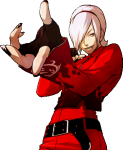 Players needed the break that 2002 provided, because 2003 would be nothing they’ve ever seem before. 2003 revolved around a new hero named Ash who, judging by his actions, may not be a hero at all. Teams were back to 3 on 3, but now you could tag in and out during matches. This added a whole new layer of strategy to KOF, and it made matches flow smoother than ever before. The lineups were also crazy. The game contained Tizoc and Gato from Garou: Mark of the Wolves, and Terry Bogard wore his MOTW costume. 2003 would be the last yearly entry in the franchise, with newer entries having a roman numeral. It was also the last KOF developed on the Neo Geo hardware. Both of these changes were for the best. Not having to commit to yearly releases meant that the developers have more time to fine tune KOF, while not having to be stuck on the aging Neo Geo hardware meant that SNK was free to use whatever they needed to make the ultimate version of KOF. XI showed the benefits of these changes. It made use of the Atomiswave arcade board along with new character sprites, and it had an even deeper combat system. Several new characters were introduced, including a brand new Mark of the Wolves team. The lineups were even zanier, with the Fatal Fury team consisting of Terry Bogard, Duck King, and Kim Kapwhan, and KOF 99’s Whip back on the Ikari Warriors team. On a side note, the developers behind KOF XI seem to be fans of the obscure SNK fighter Buruki One, as a couple characters from the game are secret characters and can be unlocked.
Players needed the break that 2002 provided, because 2003 would be nothing they’ve ever seem before. 2003 revolved around a new hero named Ash who, judging by his actions, may not be a hero at all. Teams were back to 3 on 3, but now you could tag in and out during matches. This added a whole new layer of strategy to KOF, and it made matches flow smoother than ever before. The lineups were also crazy. The game contained Tizoc and Gato from Garou: Mark of the Wolves, and Terry Bogard wore his MOTW costume. 2003 would be the last yearly entry in the franchise, with newer entries having a roman numeral. It was also the last KOF developed on the Neo Geo hardware. Both of these changes were for the best. Not having to commit to yearly releases meant that the developers have more time to fine tune KOF, while not having to be stuck on the aging Neo Geo hardware meant that SNK was free to use whatever they needed to make the ultimate version of KOF. XI showed the benefits of these changes. It made use of the Atomiswave arcade board along with new character sprites, and it had an even deeper combat system. Several new characters were introduced, including a brand new Mark of the Wolves team. The lineups were even zanier, with the Fatal Fury team consisting of Terry Bogard, Duck King, and Kim Kapwhan, and KOF 99’s Whip back on the Ikari Warriors team. On a side note, the developers behind KOF XI seem to be fans of the obscure SNK fighter Buruki One, as a couple characters from the game are secret characters and can be unlocked.
SNK abandoned the Atomiswave in favor of the Taito Type X2 arcade board. It bought a true next generation look to the series, starting with KOF XII. This was basically a dream match. Unfortunately, despite including online play, this wasn’t received very well. The game had one on one fights (instead of teams), had the lowest character count of any KOF game, and it bought no revolution to the Ash storyline due to it being a dream match. The game was basically seen as one giant tech demo for the Taito Type X2 board. Thankfully, KOF XIII, which was just released in Japan brings back the teams and concludes the Ash storyarc. Although no U.S. Release date has been announced yet, I image that it won’t be much longer before we hear of one.
Spinoffs and Remakes
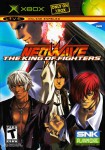 There have been several side entries in the KOF series. Among them is an role playing game called KOF Kyo, a vertical-scrolling shooter called Skystage, and a series of Japan-only Pachinko slot machines. KOF R1 and R2 were super-deformed KOF games released for Neo Geo Pocket. R1 could even link with Dream Match 1999 on Sega Dreamcast to unlock special features. KOF Neo-Blood and Howling blood were Game Boy Advance exclusive entries in the series, being set between the Orochi and NESTS storylines and featuring new characters. KOF 94 Re-Bout is a remake of the original KOF with remastered graphics, the team edit option from 95, and new playable characters. Unlimited Match is a remake of KOF 2002. KOF Neowave was the first of two KOF games which used the Atomiswave (the second being KOF XI as mentioned above). It was another dream match, although the game’s cast included the young Geese Howard from Art of Fighting 2. However, SNK was still new to the technology, as the old school character sprites looked out of place among the 3D backgrounds.
There have been several side entries in the KOF series. Among them is an role playing game called KOF Kyo, a vertical-scrolling shooter called Skystage, and a series of Japan-only Pachinko slot machines. KOF R1 and R2 were super-deformed KOF games released for Neo Geo Pocket. R1 could even link with Dream Match 1999 on Sega Dreamcast to unlock special features. KOF Neo-Blood and Howling blood were Game Boy Advance exclusive entries in the series, being set between the Orochi and NESTS storylines and featuring new characters. KOF 94 Re-Bout is a remake of the original KOF with remastered graphics, the team edit option from 95, and new playable characters. Unlimited Match is a remake of KOF 2002. KOF Neowave was the first of two KOF games which used the Atomiswave (the second being KOF XI as mentioned above). It was another dream match, although the game’s cast included the young Geese Howard from Art of Fighting 2. However, SNK was still new to the technology, as the old school character sprites looked out of place among the 3D backgrounds.
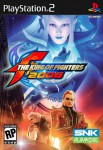 The KOF Maximum Impact series is a 3D version of KOF (apparently SNK didn’t get the memo that all their attempts at 3D sucked). The Maximum Impact games have their own continuity, and centers around a group of new characters and their gang conflict. There are no teams, and basically you have classic characters such as Kyo Ksunagi, K’, and Terry Bogard playing second fiddle to newbies such as Alba, Soriee, and Duke. Maximum Impact 2, which was released on PS2 as KOF 2006 featured characters from Samurai Showdown and Metal Slug, along with alternate costumes which turn characters into cosplayers, showing them as different SNK characters. If nothing else, at least the new fighters introduced in Maximum Impact have cool designs and it would be interesting to see them in a 2D KOF entry. Maximum Impact inspired an anime mini-series entitled King of Fighters: Another Day.
The KOF Maximum Impact series is a 3D version of KOF (apparently SNK didn’t get the memo that all their attempts at 3D sucked). The Maximum Impact games have their own continuity, and centers around a group of new characters and their gang conflict. There are no teams, and basically you have classic characters such as Kyo Ksunagi, K’, and Terry Bogard playing second fiddle to newbies such as Alba, Soriee, and Duke. Maximum Impact 2, which was released on PS2 as KOF 2006 featured characters from Samurai Showdown and Metal Slug, along with alternate costumes which turn characters into cosplayers, showing them as different SNK characters. If nothing else, at least the new fighters introduced in Maximum Impact have cool designs and it would be interesting to see them in a 2D KOF entry. Maximum Impact inspired an anime mini-series entitled King of Fighters: Another Day.
Powet Alumni Eric Dez Saunders once said years ago that if Capcom is the mainstream, than SNK is the underground. Like Street Fighter 2 all those years ago, KOF 94 helped change the landscape of fighting games, and even today, it continues to do so. KOF set a foundation for other fighting game crossovers, most notably the Capcom vs SNK games. Only SNK knows what the future holds for the franchise, but it will be interesting to see what happens next.


 PS3
PS3
 Famicom Dojo
Famicom Dojo KEEP PLAYING
KEEP PLAYING KEEP PLAYING: Rewind
KEEP PLAYING: Rewind Powet Toys
Powet Toys Powetcast
Powetcast Hitchhiker's Guide POWETcast
Hitchhiker's Guide POWETcast















Pingback: Powet Alphabet: K is for The King of Fighters | Human Identification Daily